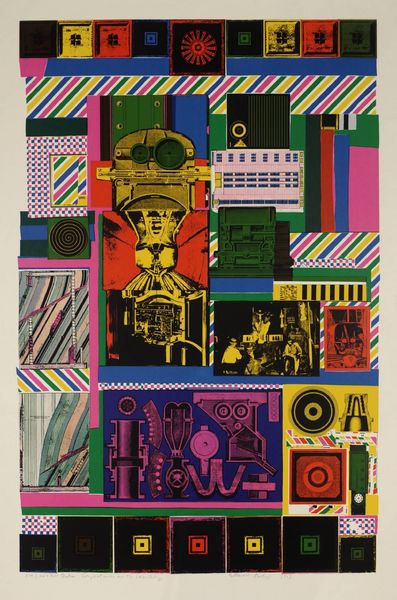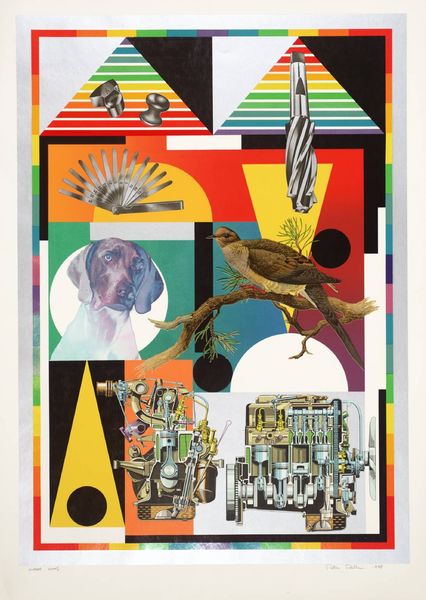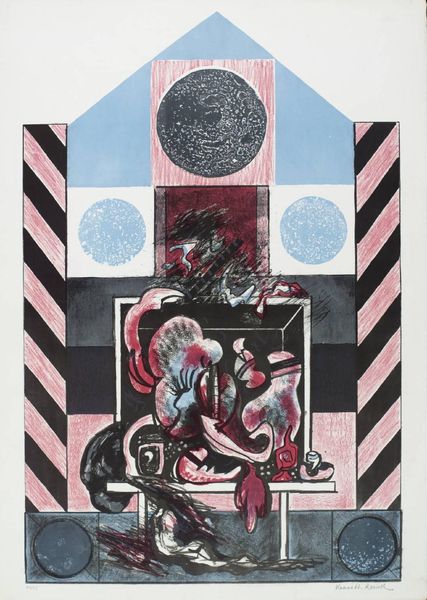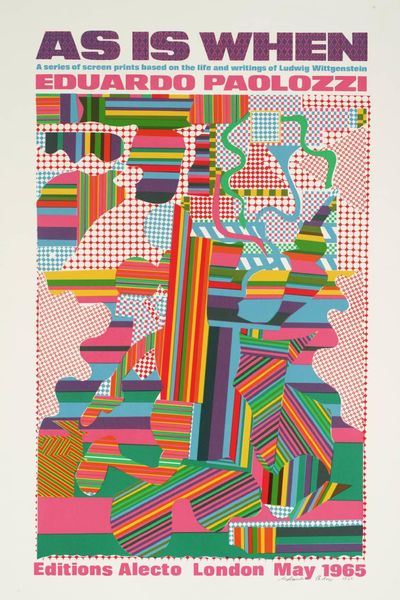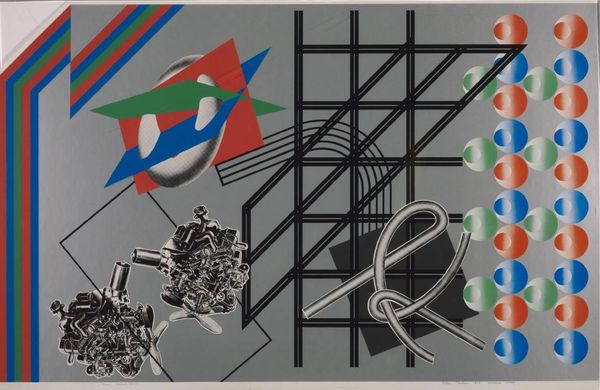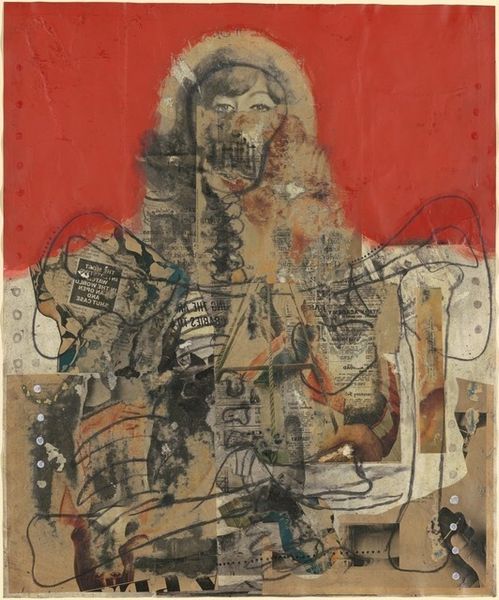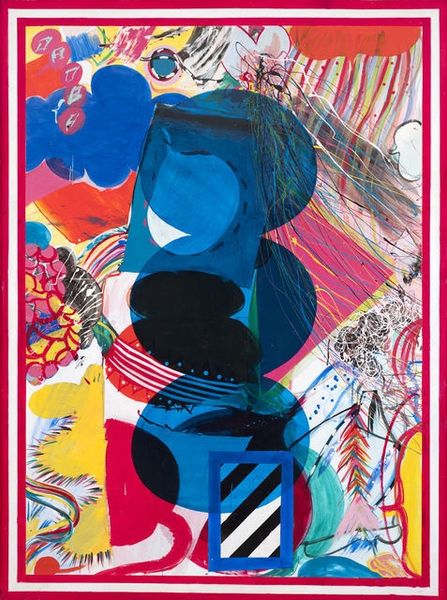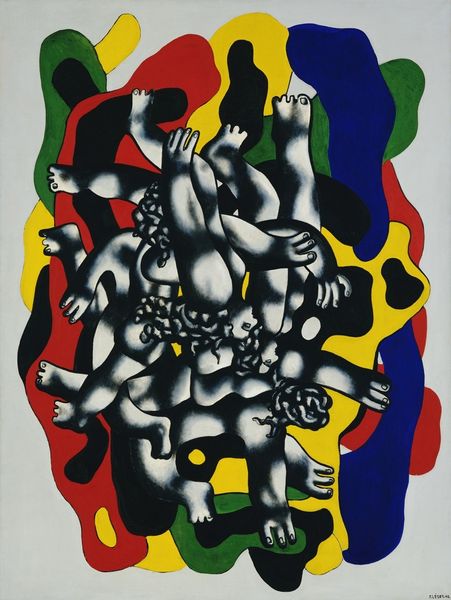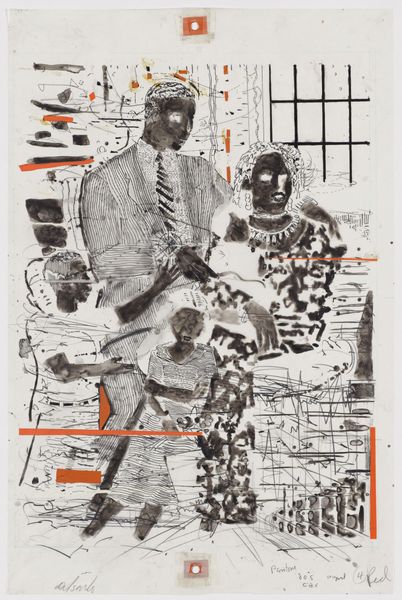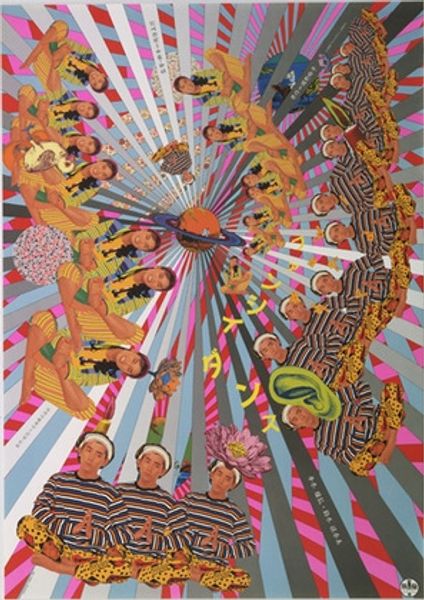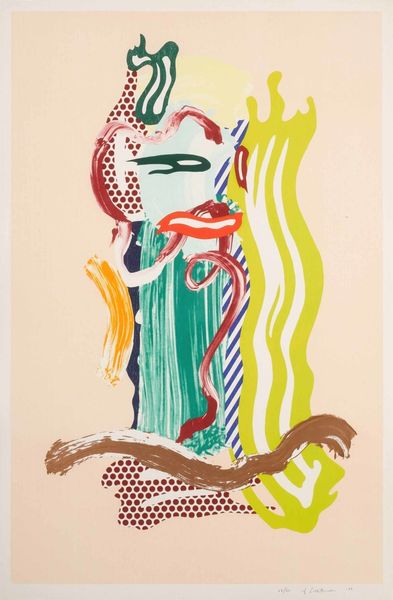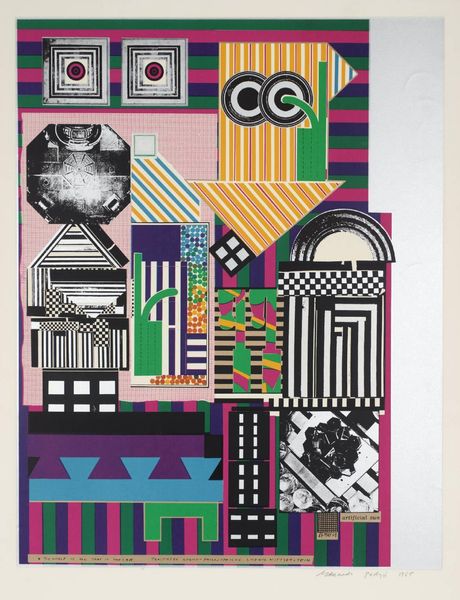
Dimensions: image: 772 x 552 mm
Copyright: © The Eduardo Paolozzi Foundation | CC-BY-NC-ND 4.0 DEED, Photo: Tate
Editor: So, this is Eduardo Paolozzi's "Wittgenstein the Soldier," created sometime during his life. It's quite striking, this figure composed of fragmented images marching over a colorful, almost psychedelic background. What's your interpretation of the work? Curator: Paolozzi often explored the impact of technology and mass media on society. Given the title referencing Wittgenstein, we might consider this piece in relation to the philosopher's experience as a soldier during wartime and also in a broader sense. How does the artist use the imagery of soldiers to critique authority? Editor: I see what you mean. The fragmented figures could represent the dehumanizing effect of war and technology. Curator: Precisely. And the rainbow background might symbolize a fractured utopia or the distractions of consumer culture. How does that change your perspective? Editor: It adds another layer, suggesting a more complex critique of modern society. Thanks! Curator: Indeed. It shows how art can reflect and challenge the prevailing ideologies of its time.
